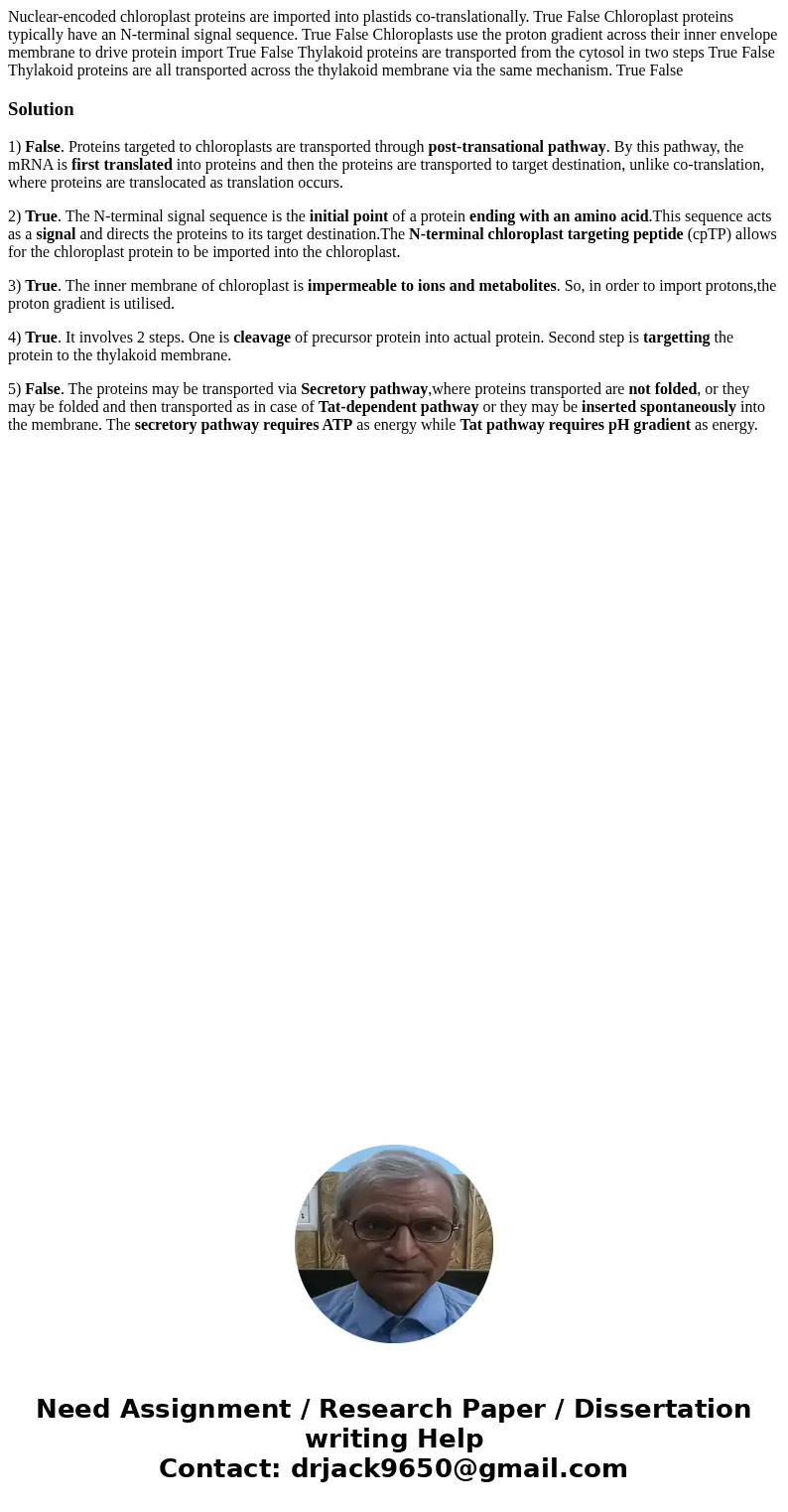Nuclearencoded chloroplast proteins are imported into plasti
Solution
1) False. Proteins targeted to chloroplasts are transported through post-transational pathway. By this pathway, the mRNA is first translated into proteins and then the proteins are transported to target destination, unlike co-translation, where proteins are translocated as translation occurs.
2) True. The N-terminal signal sequence is the initial point of a protein ending with an amino acid.This sequence acts as a signal and directs the proteins to its target destination.The N-terminal chloroplast targeting peptide (cpTP) allows for the chloroplast protein to be imported into the chloroplast.
3) True. The inner membrane of chloroplast is impermeable to ions and metabolites. So, in order to import protons,the proton gradient is utilised.
4) True. It involves 2 steps. One is cleavage of precursor protein into actual protein. Second step is targetting the protein to the thylakoid membrane.
5) False. The proteins may be transported via Secretory pathway,where proteins transported are not folded, or they may be folded and then transported as in case of Tat-dependent pathway or they may be inserted spontaneously into the membrane. The secretory pathway requires ATP as energy while Tat pathway requires pH gradient as energy.

 Homework Sourse
Homework Sourse